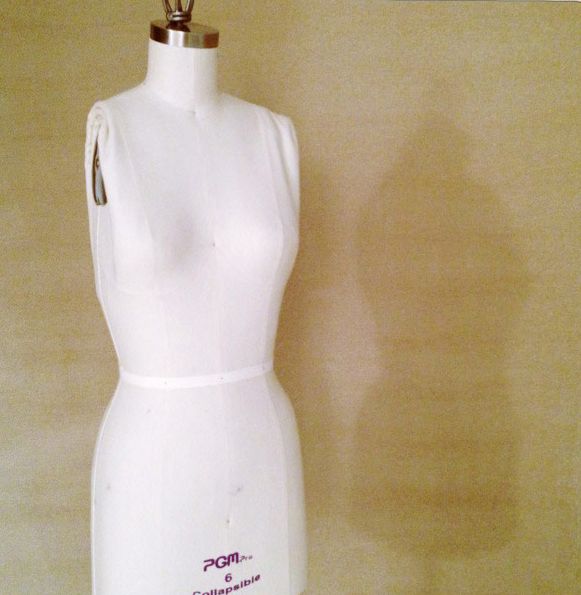
Here is one the many dress forms we use in our DVDs and web videos.
Some Sewers Consider a Dress Form Essential
I’ve never owned a dress form, but I know many sewing enthusiasts who would never dream of sewing without one. The Threads seamstress, Norma Bucko, has several in her sewing room, and we have several more tucked here and there in our editorial offices. We use them often sometimes simply to display a garment, but also to decide on embellishment or pocket placement, to examine a garment’s fit, to decide whether long sleeves or short sleeves would look best, and a dozen other reasons.
Many Sewers Customize their Dress Form
Readers have submitted a number of tips suggesting ways to adapt a dress form to fit their body perfectly including every curve or to take into account weight fluctuations. It seems to me that asking passionate sewers about their favorite dress form is like asking them about their favorite fabric–there is no one answer. Sewers know what they like about their dress form, but they also know what they don’t like. Here’s a list of articles/tips we’ve done on the subject in case you’re curious. If you don’t have access to the issue, please contact our customer service folks, or better yet, purchase our Archive DVD-ROM, and you’ll have access to all of the issues from your computer.
- “Fit for Everyone” by Kenneth D. King in issue #161. This describes how to sew removable covers to make your dress form work for multiple figures.
- “Tip: Meet Madeline” by Sandy Moeckel in issue #153. This tip describes how Sandy inexpensively made her dress form suitable for herself as well as her daughter.
- “Tip: Identical Body Double” by Anne K. Brenz in issue #144. This tip describes the way Anne made her dress form fit her every curve.
- “The Dress Form–A Sewer’s Best Friend” by Carol Fresia in issue #123. Described below.
- “Make An Arm for Your Dress Form” by Shirley Botsford in issue #90.
- “Clone Yourself a Fitting Assistant” by David Page Coffin in issue #75. This article explains how to make a dress form from scratch.
Do You Own a Dress Form?
In the article “The Dress Form–A Sewer’s Best Friend” we examined the major dress forms that were available at the time (2006), and it doesn’t appear that a lot has changed since then. If you have a dress form, what is the one thing (or many things) you love or hate about it? I invite you to leave a comment about your dress form’s pros or cons. The information will be helpful to those thinking about adding a dress form to their sewing room.


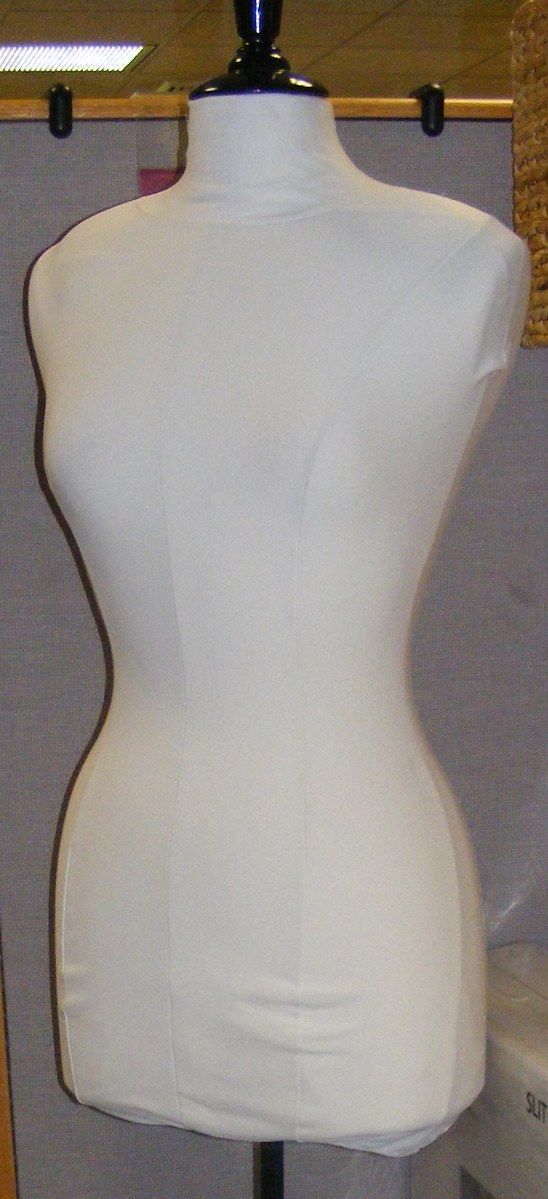

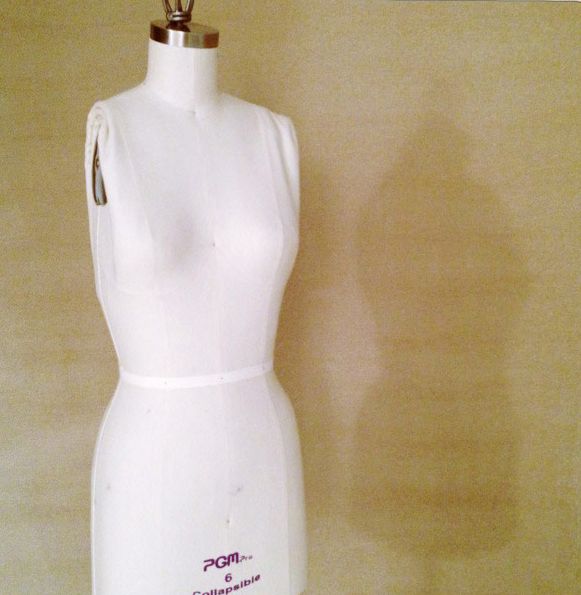
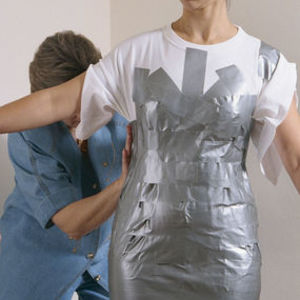

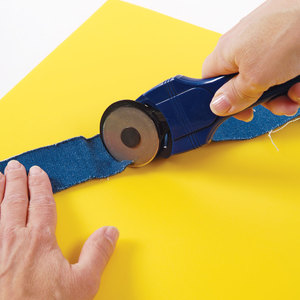
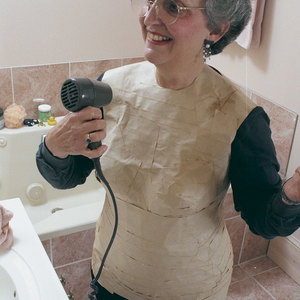
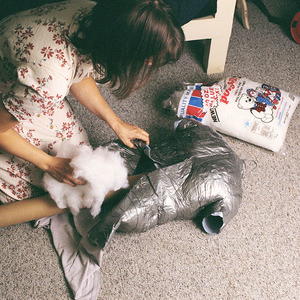

























I bought the Uniquely You dressform with measurements close to mine second hand on Ebay. I like it because it is made of foam. I used duck tape to take in the waist, lengthen the torso and lift the bust to fit my measurements. Then I altered the cover trying it on myself to fit perfectly and put it on the Uniquely You body form. It is a pretty close body double. It works for me.
I have extremely narrow shoulders, so none of the commercially available dress forms fit them. I did the duct tape dummy with the DVD from dressformdesigning.com, and covered it so I could pin into it. I also made a pin cushion at the top of the neck, where the head will be. One of the nice things about it, is that I also have a fairly long neck, so was able to make the neck as high as I needed, so can judge the height of turtle necks. It also has arms, so I was able to mark the most flattering place for all my sleeve lengths (cap, short-sleeve, 3/4, and wrist, blouse and jacket). I also marked my favorite lengths for skirts on the support pipe, as well as marking the neckline, so my boat-necks never show my bra straps, and my V-necks never plunge too much!
I never thought a dress form was really all that important until I took college level classes. It became indispensable!
I have a dress form that I bought several years before I took my classes so I really didn't know what I needed. On the plus side it is a "dial a size" kind. I like that it comes apart for ease in storing. The down side is that its' plastic foam covered body does not allow one to insert pins into the form. This makes draping really difficult. The up and down feature that lets one adjust for personal height tends to slip down at the slightest pressure on the shoulder or neck area. It seems to be top heavy and tips over fairly easily. I really have a love/hate relationship with mine. I wish I had taken the classes BEFORE I bought the form.
I tried the common dial form and it was so flimsy that it just broke. Later I had a duct tape form made professionally for my daughter-in-law so now I can sew for her and she doesn't have to travel 50 miles just for a fitting!
The dress from I own is an adjustable model purchased at Fabricland about 18 years ago and I use it for every item of clothing I make. It is a well made adjustable model that takes pins but the outer layer is really starting to fall apart. For my next purchase I am considering a full body form that I can use to fit slacks as well but they are very expensive and I am having a hard time justifying the cost just for home sewing.
I brought an adjustable model about two years ago and I love it! It is a "Purfex" brand (a New Zealand brand). It's the top-of the-line model on the market here, very sturdy and offers more adjustment points than the Singer ones. In addition I have adapted it for my measurements (e.g. more in front, less behind in certain areas!)
Using a dummy makes a huge difference when testing fit, especially when doing things like tissue fitting. At the moment I am really missing using it as the fit has been adjusted to sew my daughter's wedding dress. I prepared the padding that time round using an adaptation of Kenneth King's article. I have a second zip on layer partially prepared so I can swap back to my form, just haven't had time to finish it.
By setting the form smaller and then padding it out to fill a heavy cotton cover exactly fitted to your body, you get a surface that is easy to pin into as well.
My first dress form was a completely customizable wire form which was fabulous. Over the years, the inside parts deteriorated. When I bought a replacement, it was the dial a measure type. But it can't be customized to duplicate a full bust with narrow back or a shorter/longer torso. So, it's not ideal, and I miss the old form. I'm also in the process of losing weight, so for me, this adjustability has become crucial. I'm now considering purchasing the add-on pads sold for this purpose. It would be less time consuming and overall less costly than making a new form every month or two as my size and shape change.
About 15 years ago I made a polyurethane foam dress form that has held up extremely well. With the help of my husband, I tape-fitted a large plastic bag to cover my torso and neck. We then covered it with gauze-and-plaster bandages used for setting broken bones. (Purchased at a surgical supply store.) They were easy to use - dip in a pan of water for a few seconds and then apply. We applied the strips in a similar way to the duct tape technique, going diagonally from under-bust to shoulder, horizontally around waist and hips, etc. Then let the plaster set. This was the hard part as the plaster gets hot as it sets. I stood in front of a fan! We cut the mold down both sides under the arms using a thin saw. Since it is not flexible, a single cut down the back would have cracked the plaster getting it off. I pulled the plastic bag out of the mold (comes out easily) and filled some of the rough places on the inside with some more plaster to smooth it out. We then duct taped the sides of the mold together, trimmed the bottom and arm openings flat, put cardboard ovals in the arm openings and plywood in the bottom, secured with more tape. Then we mixed up the two-part polyurethane filler and quickly poured it in the neck opening. It expands into the whole form and out the top. After it set, we trimmed off the excess foam with a saw, opened the mold and removed the foam form. It needed a little sanding. We then mounted it on an old music stand base, attaching it to the plywood bottom. The stand is adjustable and is set to my height. I made a cotton/spandex cover for it with center front and back seams that I lined up with the centers of the form and then marked the waistline with fabric marker. I made a pin cushion to mount on top of the neck which covers the raw foam. I can pin into it as the foam holds pins quite well. I gained some weight and all I had to do was remove the cover and pad the form a bit with batting. I can also put a bra on it for further shaping. It's wonderful for fitting; it shows how my shoulders slope (slightly different from each other!), it shows how garments gap at the back of my neck. It's great for pin-fitting patterns as I can pin them right to the form, lining them up with the center lines. It was well worth the effort.
I got a Uniquely You for Christmas two years ago and spent a long time adjusting the cover. I was losing weight and my husband was my only helper for the fit. He was a trouper though and I got it fitting beautifully, except the shoulders are a lot wider than mine and that interferes when fitting the tops of my outfits. Out came the serrated knife and I cut off the portion that didn't allow a good fit. I also had to pad the front a bit for my tummy. Other than that, I'm loving it.
I made a duct tape form in a class twice. The second was to re-fit after some weight loss. It has made it possible for me to finally be able to fit my back! I discovered that I need a smaller size pattern, a full bust adjustment and a shorter center back neck to waist than commercial patterns. What a difference it's made in my satisfaction level with the garments I make for myself. Now "she" just sits in my closet with a plaid shirt on. The duct tape forms tend to "explode" over time, so it'll need adjusting if I decide to use it again.
Can't bear to let it sit out for other eyes to see! It's me, undressed!
My first dress form was a French form (royal blue/red paisley), which was my dream form. Then my two darling grandsons spent a summer with me and she was destroyed. My next/current dress form is Dritz - My Double + the addition of Fabulous Fit Fitting System, which allowed me to add the real behind shape with the sink in my very straight back. This was always a fitting problem in ready made and sewing cloths for me. I make all my cloths using my pin able form. Alteration of patterns is so easy due to my dress form. I've used dress forms for over 20 years. In my dressmaker business I used different size forms. I can't remember what sewing was like without a dress form.
At this very moment I am waiting patiently for my pour foam to arrive to fill my plaster cast of my body.
I have an adjustable form at the moment and it is nothing like my body type as I am straight up and down with wide shoulders. I should have just bought a mens dress form and stuck a bra on it.
I can't wait to start draping on it.
I was fitted with a My Twin dress form about 5 years ago to help make the pattern alterations due to my severe scoliosis. I consider my dress form absolutely essential to achieve the best fit possible, and to create a back pad that minimizes the wrinkles from the curvature.
After doing a lot of research about dressforms, I've ordered a very simple one that has good reviews on Amazon, the Dritz Sew You. Despite its being very reasonably priced, $85.00, the people who've purchased it seem to be very happy with it. I think it will need some weighting, perhaps the stand attached to a square of plywood to keep it from falling over, but other than that it looks perfect for my needs. I've read a number of articles about the best way to pad the form and I've decided to go that route. Several years ago I tried a duct tape form but I wasn't very happy with it. Then I tried the Uniquely You, but I wasn't happy with that either. I think an adjustable form with padding is the ticket. I can't wait until it arrives so I can get started. Fun to come! :)
My husband draped me with the wet plaster strips years ago to make me a Styrofoam dress form. We did it as a combination pant and top as jumpsuits were popular then. Only problem was I stood with my legs slightly apart and thus ended up with the thigh area wider than needed. However for pants it is perfect and even for dresses. We now realize all we need to do to slim the thighs is shave down the Styrofoam with a rasp. Over the years my waist has grown a bit thicker but other than that it still is close enough to me that it works very well.
The thing I like so much about this MyTwin dress form is that the posture is me. I had tried commercial dress forms previously, but if they don't have the inches in the right spot, they are not as helpful. The first time I fitted a sleeve using MyTwin dress form I instantly understood why I had always had so much difficulty. I stand extremely erect, my elbow hangs slightly behind my back, making the back bodice armscye short in length and the front quite long in length. Also, seeing my back helped me understand why I needed to take up 2 1/2 inches in the length of the back bodice and lengthen the front bodice.
If you don't need to do a lot of adjustments to a regular pattern, then a commercial dress form will probably work just fine. If you do need to do a lot of adjustments, (large or small bust, long or short waisted, narrow or broad back etc.) I think you might find taking a weekend to make your own dress form worthwhile. Do it with a friend so you both end up with one.
Priscilla (my dress form named after Priscilla Queen of the Dessert) demurely stands in my room (sewing, study, dressing room) with an old suit jacket and skirt and neck scarf. Everyone comments on her as she looks quite lovely. They also love hearing the story of her construction.
I honestly can't imagine sewing for myself without Priscilla.
yep - I've had it so long I forget who makes it - Dritz probably. It is greatly adjustable and allows for padding where needed. I also put a bra on it - one that I will wear with the garment I'm constructing. I don't have a form that accommodates trousers per say, but since my abdomen is the culprit, I use that part of the dressform to fit the trouser front.
I have a dress form which can be altered and I can get the right fit for bust, waist and hip but I must have a very narrow neck as I can't the neck small enough. This means the garments never fit as I can't get them up far enough at the back - very frustrating. I am thinking of making a duck tape form when I pluck up the courage.
I wrapped my bodice and leg mannequins with upholstery batting then topped with fusible interfacing. It is quite useful. The best thing for fitting was the My Label by Bernina that gives me exact fit patterns. Love them all! Best wishes to all fellow sewers!
I just purchased a Dritz My Double Dress form. My neck to waist measurement in 16 1/2 inches, but the form measurement is 15 1/2. I can't find instruction about how to lengthen this area. Does anyone know how to do this?